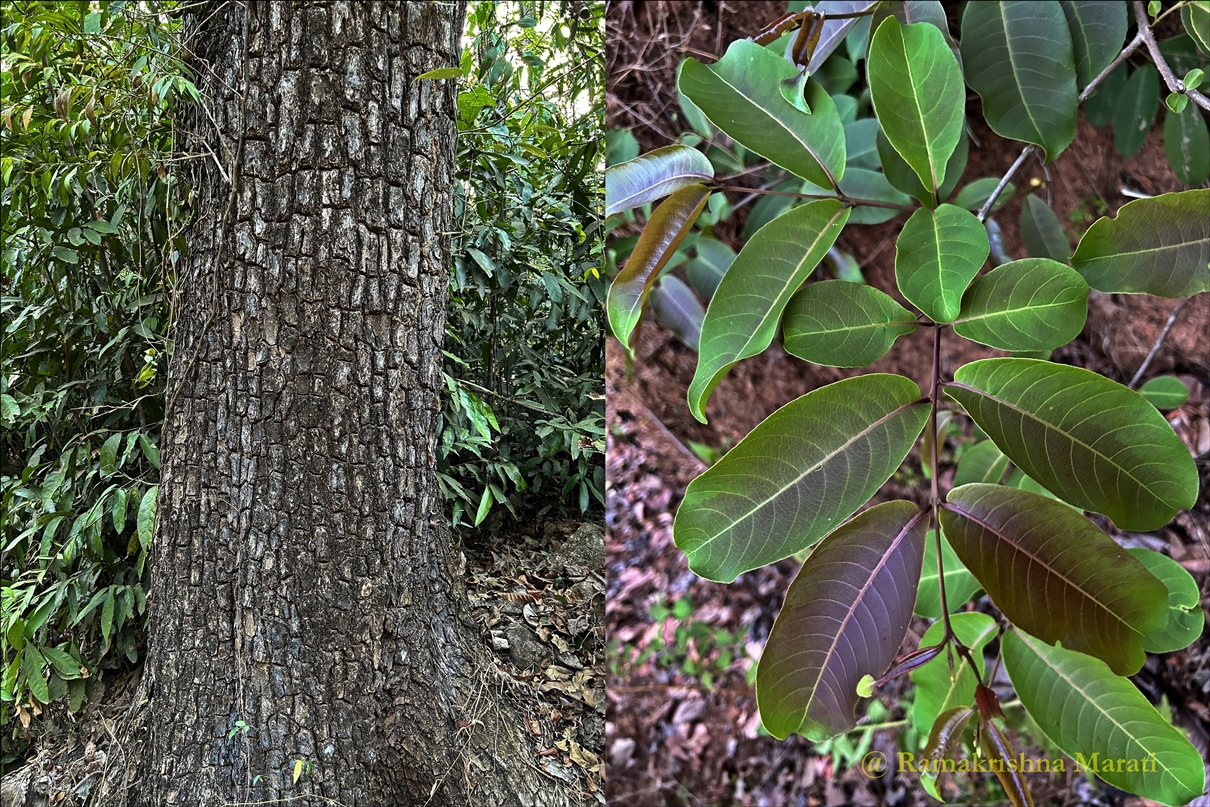Pakyong, 01 April : In a fascinating revelation made by the tribal community of Andhra Pradesh, the Forest Authority has been enlightened. The Andhra Pradesh Forest Department recently embarked on an intriguing exploration in Papikonda National Park, where they uncovered a remarkable secret about the Indian laurel tree’s ability to store water, particularly vital during the summer months.

This newfound knowledge was generously shared with the Forest Department by the Konda Reddi tribe, a Particularly Vulnerable Tribal Group residing in the Papikonda hill range within the Godavari region.
The scene of Forest Department officials carefully dissecting the bark of an Indian laurel tree (Terminalia tomentosa) in Papikonda National Park captivated many observers. As they made incisions, water unexpectedly flowed out, showcasing the tree’s remarkable capacity for water storage, especially crucial amid scorching summer temperatures.
View this post on Instagram
This groundbreaking discovery underscores the invaluable contribution of indigenous knowledge, as imparted by the Konda Reddi tribe, shedding light on the hidden attributes of the Indian Silver Oak, also known as Terminalia tomentosa.
Amidst the escalating water scarcity in Andhra Pradesh and neighboring regions, the Forest Department’s revelation in Alluri Sitharama Raju district has garnered widespread attention nationwide.
1. Leveraging the traditional wisdom shared by the Konda Reddi tribe, officials conducted an experiment within Papikonda National Park, unveiling the Indian laurel tree’s (Ficus microcarpa) unique ability to retain water within its bark during the dry summer months.
2. Recognized for their profound understanding of the local ecosystem, the Konda Reddi tribe played a pivotal role by sharing their ancestral knowledge with the Forest Department, guiding them toward the water-retentive capabilities of the Indian laurel tree.
3. This collaborative effort not only underscores the significance of indigenous knowledge in contemporary environmental management but also highlights the tribe’s crucial role in preserving the ecological equilibrium of the Papikonda hill range.
Terminalia tomentosa Mart. ex Eichler (COMBRETACEAE)
Common names: Kannada: Banapu, Kirimatti.Tulu: Banpu.
Malayalam: Tehmbara.
Sanskrit: Dharaphala, Saradru.
Tamil: Kara maruda.
Telugu: Tani.
English: Laurel tree.

Description: Large deciduous trees up to 30 m tall with grey or black, deeply cracked rough bark; young parts clothed with yellowish-brown pubescence. Leaves sub-opposite or the uppermost alternate, ovate-oblong, elliptic-lanceolate or elliptic-oblong, rarely obovate, up to 20 x 8 cm, truncate – cordate at base, obtuse, emarginated or acute at apex, softly tomentose when young with a pair of large glands, one on either side of the midrib beneath; petioles up to 1 cm long. Flowers in axillary or terminal paniculate spikes, yellowish-white or dull-yellow, fragrant. Calyx companulate, villous without, lobes 5. Corolla 0. Stamens 10, 2-seriate. Disc clothed with long fulvous hairs. Ovary 1-locular. Fruit a drupe, ellipsoid, up to 6 x 3.5 cm, glabrous, brown with 5 broad wings. Seed solitary.
Flowering & Fruiting : April – August.
Distribution: India: Common throughout in deciduous and moist forests, ascending to an altitude of about 1200 m. Sri Lanka.
Uses: It is one of the most universally employed of all the important Indian timbers. Widely used for building, beams, joints, rafters, doors and window frames, boarding, construction of carts, toys, furniture, oil-mills, rice pounders, engine brake blocks, electric casing, in mines as side props in shafts and galleries, railway wagons for floor-boards and doors, railway sleepers, agricultural implements, tool handles, plywood (both general and decorative), electric poles etc. It is a suitable timber for use in fire-proof buildings. Top end branches and unsound logs make very good firewood and charcoal. The bark is useful as a tan. Leaves are lopped for fodder. In Chota Nagpur the leaves are much used for feeding tasar silkworms. Bark diuretic, styptic, cardiotonic, used in haemorrhage, ulcers, fractures, bronchitis, diarrhoea, fever, boils, pruritus and diseases of head; gum purgative.






